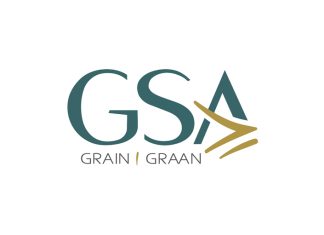
Marketing, NAMPO and Research Coordination lead

Corné Louw
Applied Economics and Member Services lead
In the agricultural community, we are used to changes and the shifting of risks. Looking at the wider environment right now, there are several storms and uncertainties brewing.
On the economic front, the local economy just cannot escape weak growth. This is important for the grain industry, as we not only need greater consumption of staple foods such as bread and maize meal, but also of meat and animal feed. At political level we are nearing an election year: We already know this will be a period of polarisation with statements made that are usually not favourable for the agricultural environment.
As far as agricultural production is concerned, there are also a lot of questions linked to the current climatic conditions. What are the real conditions in the USA, how will the expected El Niño affect local crops or will it have an impact at all? These are all risks complicating the decision-making of producers.
It is well known that the most climate models show a high probability of an El Niño phenomenon for the coming summer rainfall season. This is certainly nothing unusual for South Africa’s grain producers who are used to droughts in midsummer. As a result of the past three years’ high rainfall, producers – especially in the western parts – have made adjustments to manage the excessive rain. One of these management measures was to plant more soybeans since this crop could use the excess moisture and performed better in waterlogged conditions. This raises the question: How should a crop like soybeans be managed in a drier year, especially in the west of the summer rainfall area? And will producers shift to planting larger areas with crops such as sunflower seed, grain sorghum, groundnuts and maize,
that might be more drought-tolerant?
In the run-up to the new summer grain planting season, fertiliser prices have fallen to levels seen before Covid-19 and the Russia/Ukraine war, while energy costs such as diesel prices are also about 18% lower than a year ago. This is good news as last season’s crop was planted with record high input prices.
Although it seems as if the production cost of grains has decreased compared to last year, grain prices are also showing a downward trend. This further increases the risk that the expected El Niño can bring. If the cost price squeeze causes producers to struggle to make money under normal circumstances, the risk of a dry and warm climate for the coming season is just that much greater!
In times like these it is important to keep calm and to determine what the external factors with an impact on the farming operation are. Producers must ensure that whatever is within their control, must be managed as well as they possibly can. Taking unnecessary and uncalculated risks in these times is taboo. Uncle Kallie Schoeman often reminds us to make a list of things that worry us. We will quickly see that most of these are aspects that are completely beyond our control. This exercise helps to be aware of the following:
• Everything that influences you and your farming operation;
• aspects that are totally beyond your control (let go of those); and
• then the matters you can do something about. Focus on these.
Given the perspectives mentioned in this editorial, one can easily become discouraged and make emotional decisions due to all the uncertainties. Carefully determine what you as a producer have control over, and what not. Make use of historical decision-making that has paid off and stick to the management plan that brought you here.
One of Warren Buffet’s most famous tips are very applicable in this situation: ‘To invest successfully over a lifetime does not require a stratospheric IQ, unusual business insights, or inside information. What is needed is a sound intellectual framework for making decisions and the ability to keep emotions from corroding that framework. You must supply the emotional discipline.’
Good luck to the winter grain producers who will now reap the rewards of their hard work and planning with harvest season approaching. As for summer grain producers, good luck with your planning in the run-up to a new season. Keep your eyes peeled for Grain SA sources that supply good information and feedback to support you as the producer in effective decision-making.











